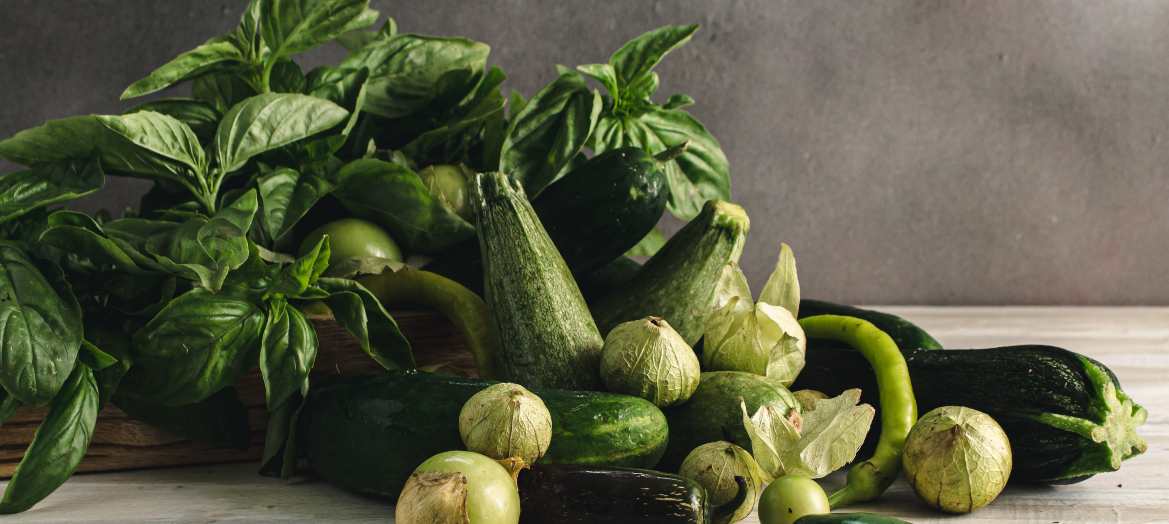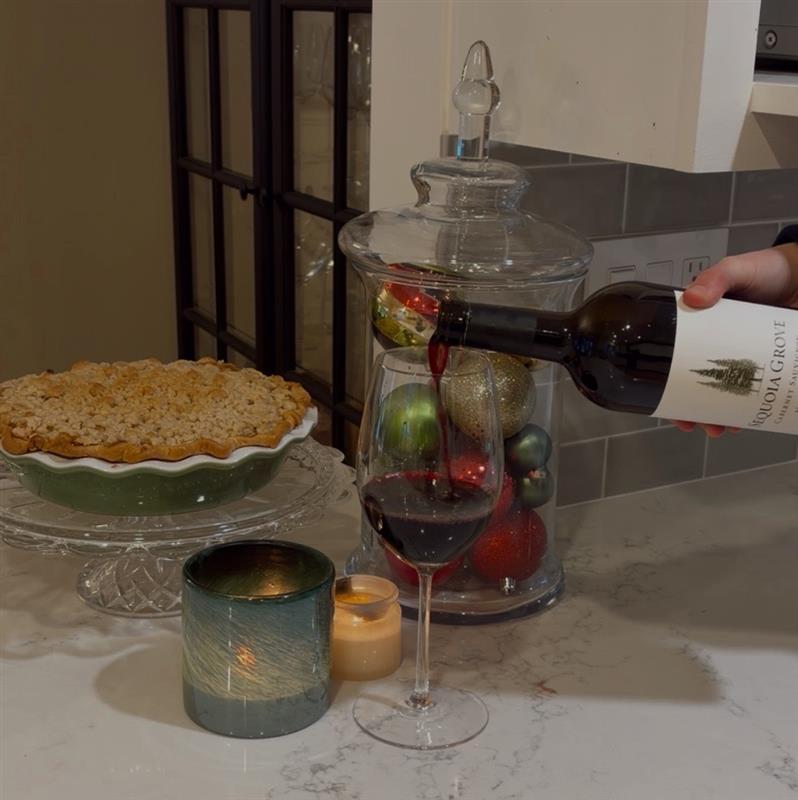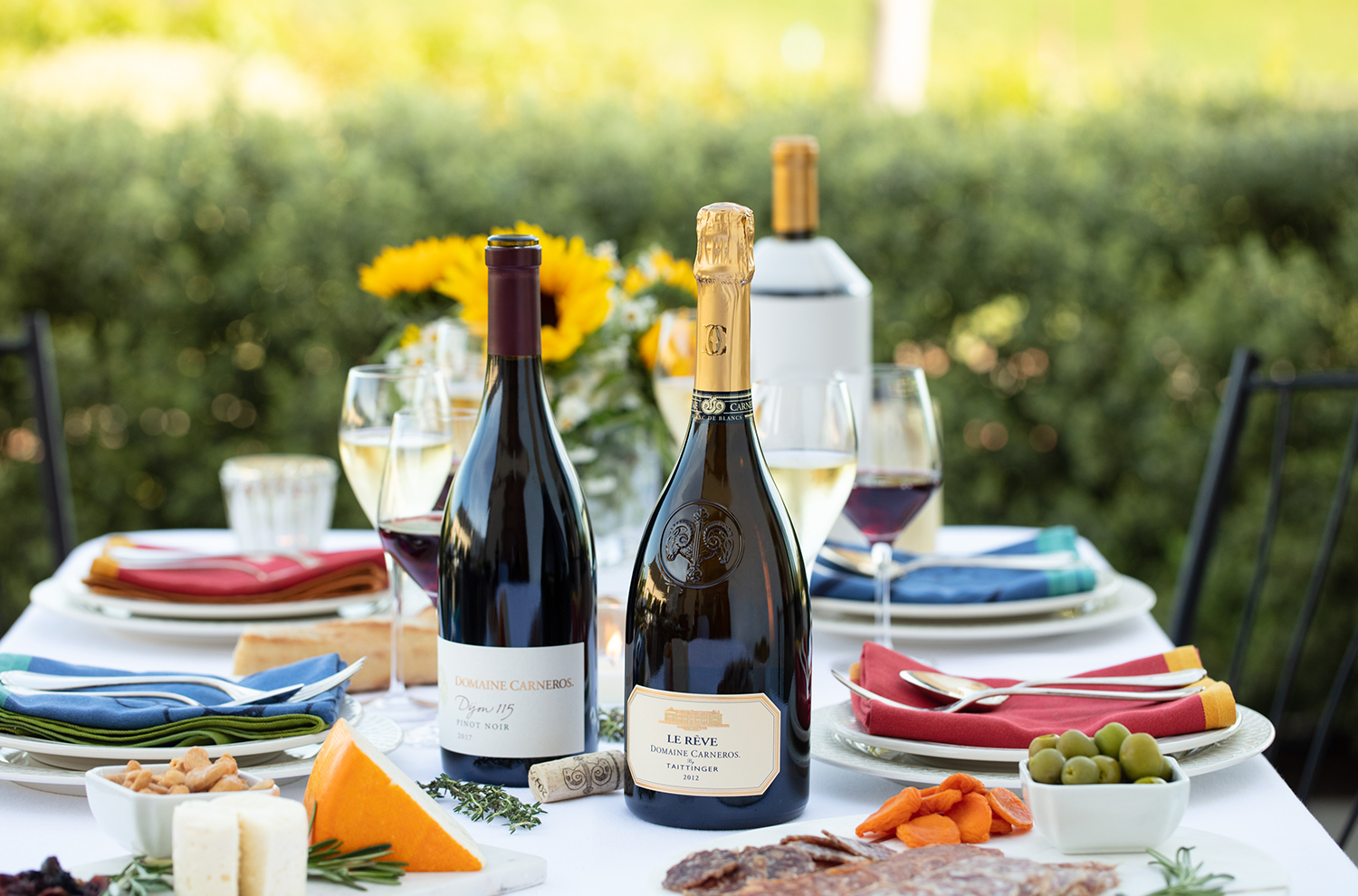My favorite time of year is the end of summer leading into early fall, when the farmer’s market bursts with Mother Nature’s bounty. With so many fresh veggies, fruits, and herbs, I wanted to share a couple of my go-to recipes using fresh, local produce and pair them with my favorite wines.
These are not step-by-step recipes but an inspiration to use what is seasonal in your farmer’s market near you, plus a few ingredients from your fridge and pantry, to put together a delicious, healthy meal. Be spontaneous: try the spices in the back of your cupboard that you always wanted to try, pour yourself a glass of wine, and have fun in the kitchen.
Easy “No-Recipe” Recipes Using Farmer’s Market Fresh Ingredients
Shepherd’s salad
Shepherd’s salad is a staple in Eastern Europe and the Mediterranean. With tomatoes bursting with flavor this time of year, I make it for breakfast, lunch, or dinner with an omelet or a grilled chicken breast on the side. It makes a light, satisfying meal.
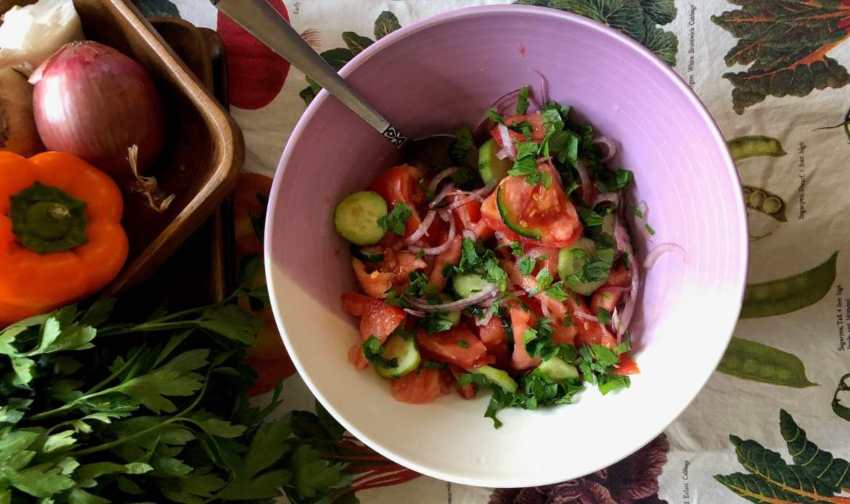
Pick a firm, ripe tomato and slice it in big half-moon chunks. Chop scallions or thinly slice red or Vidalia onions. Red, orange, or yellow peppers sliced in ribbons are what I prefer for this salad (I avoid using bell peppers because they tend to overpower the other ingredients; but hey, it’s your kitchen, so use what you like). Slice a few seedless or Persian cucumbers in rounds or half-moons and sprinkle with fresh parsley or basil. Lightly salt the salad, drizzle with olive oil, toss, and leave it for five minutes to macerate on the counter. When you are ready to eat, crumble some Bulgarian or Greek sheep’s milk feta (hence the shepherd name) and dig in.
Pair this fresh shepherd’s salad with a wine that has a strong personality, good minerality, and complexity, yet is fresh and zesty to match the flavors. A great choice is the Villa Matilde Greco di Tufo DOCG.
Stuffed anything! Summer squash, zucchini, peppers, tomatoes, eggplant…
Stuffed vegetables are a staple in Bulgaria, where I come from. You can always make a meal in a pinch using a handful of grains (rice, bulgur, quinoa, etc.), herbs, a cup of stock or a bouillon cube and water, and a handful of fresh herbs (parsley, dill, basil, thyme, mint). When hollowing out the vegetables you have chosen for the “boat,” reserve any leftover innards for the filling.
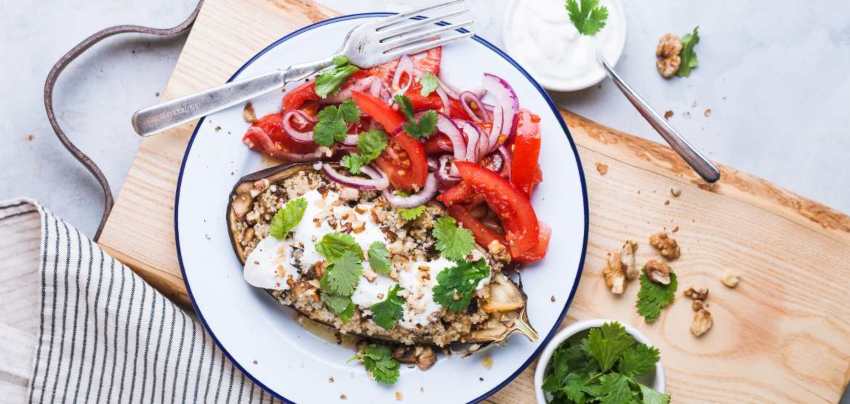
To save on washing dishes, I use my trusty Le Creuset Dutch oven to make this meal. Glaze the bottom of the pot with olive oil and heat over a medium flame. Chop an onion and toss in to stir for a couple of minutes; add a minced garlic clove and stir until fragrant (if you are a meat eater you can toss in some ground turkey or beef at this point; cook to evaporate the water in the ground meat). Add in the vegetable innards and sauté until most of the liquid evaporates and the mixture is fragrant. Then, add your half cup of grains, a cup of broth, and simmer for a few minutes. Season to taste with salt, pepper, and your choice of fresh herbs. I usually use a brimming cup of freshly chopped parsley and dill. If you like a bit of spice, add red pepper flakes or cayenne and mix everything well. If your mixture looks dry, add a quarter cup more broth.

I personally love to use zucchini or red peppers to stuff. I line them up on one side of my pot, pushing the unused stuffing to the other end (no need to rinse the pot). Fill your veggies, but don’t overstuff—your ingredients will cook inside the vegetables, and the grains will expand.
Whatever bits are left on the bottom of the pot when you are done, leave them. Pour an inch of water or broth into the pot and bring to boil, then lower to a low simmer and cover the pot. It should take 15-20 minutes for the veggies to steam and the grains to soften. Test for doneness, turn off the flame, and let stand covered for a few minutes before serving. Sometimes I broil them in the oven uncovered for a few minutes to get a bit of a char.
For a great side sauce, crush two medium garlic cloves, mix them into a cup and a half of plain yogurt, and season with a pinch of salt and a drizzle of olive oil.
Well, after all that work, if you haven’t already poured yourself a glass of wine, now would be a good time! Château d’Aqueria Tavel Rosé is my choice for this bold, herbal dish with garlicky yogurt sauce. Tavel is a wine with 200 years of history and beloved by kings and popes alike: it is light but full, complex, herbal, and has a gorgeous, deep salmon color. It is higher in alcohol and fuller-bodied than your all-day rosé, making it the perfect food pairing wine.
Roasted Vegetable Medley
At the end of the week before your next run to the farmer’s market, round up all of your leftover veggies: potatoes, leeks, onions, okra, squash, zucchini, carrots, fennel, tomatoes, eggplant, peppers.
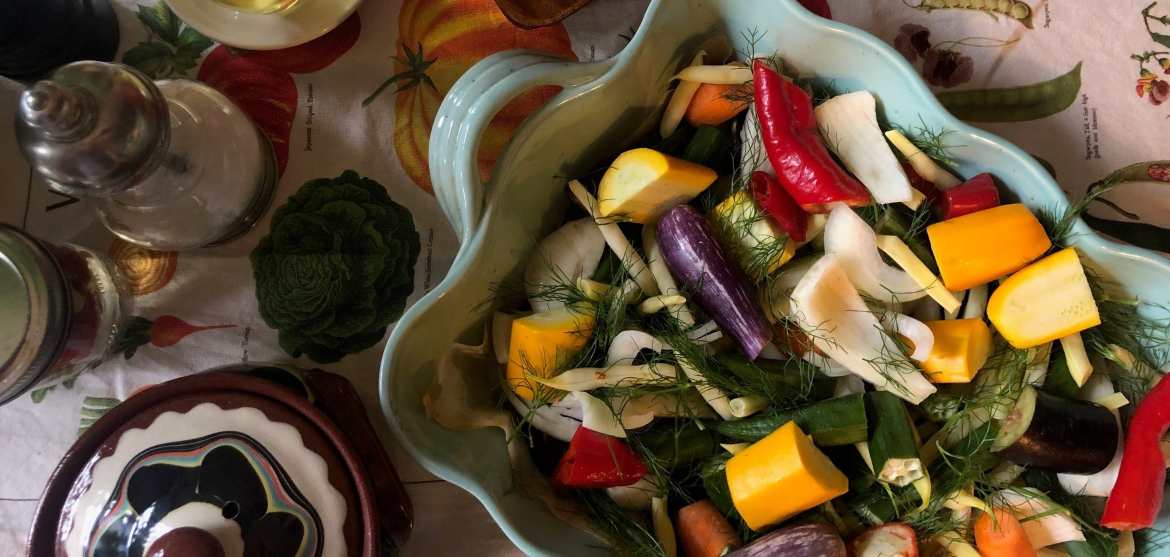
Discard the inedible stems and end parts, cut into equal-sized chunks (I like them quite big; see photo), toss into a large bowl, add a whole garlic head cut in two crosswise, and coat with olive oil. Don’t be stingy with the olive oil—the veggies need it. Season with salt, pepper, paprika, a tablespoon or more of fresh herbs (thyme, basil, parsley, mint); if you don’t have any fresh herbs, a teaspoon of Herbs de Provence will do the trick. Toss to combine. Preheat oven to 425F, cover a baking sheet with parchment paper, spread veggies on the baking sheet evenly, and roast for 35-40 min. The aim to to bake them evenly to a golden-brown goodness, so check on them from time to time and move them around if needed.
These roasted veggies make a great main dish over rice, but they are even better as a side dish to some roasted pork ribs. Rebellious Red Blend is the grape medley to your vegetable medley, with Zinfandel, Cabernet Sauvignon, Merlot, Syrah, Mourvedre, Petite Sirah, Malbec, and Sauvignon Blanc. The grapes come from the North Coast of California, producing a wine with black cherry jam and strawberry aromas and warm spice, licorice, black pepper, and cardamom on the palate. Why not rebel and have more than one glass with dinner?
